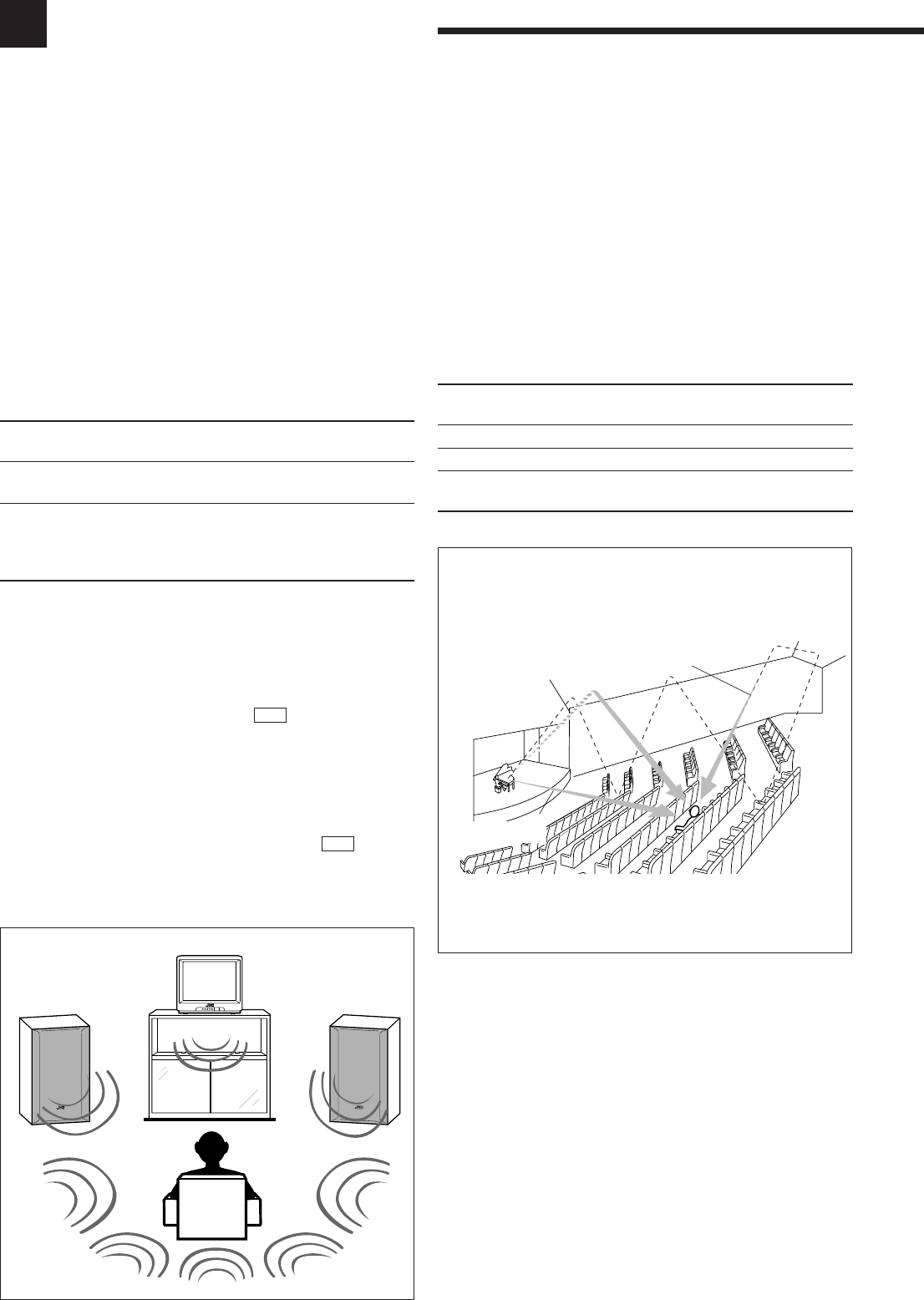
20
Using the DSP Modes
The built-in Surround Processor provides three types of the DSP (Digital Signal Processor) mode — 3D-PHONIC mode,
DAP (Digital Acoustic Processor) mode and Surround mode.
3D-PHONIC modes
The 3D-PHONIC mode gives you such a nearly surround effect as it
is reproduced through the Dolby Surround decoder, which is widely
used to reproduce sounds with a feeling of movement like those
experienced in movie theaters. The 3D-PHONIC mode is the result
of research on sound localization technology carried out at JVC for
many years. This mode can be used when the front speakers are
connected to this receiver (without respect to the rear/center
speaker connection).
• You can select either 3D ACTION or 3D THEATER to your
preference when playing an analog or Linear PCM (digital)
source.
• You can select either 3D DIGITAL or 3D THEATER to your
preference when playing a Dolby Digital source.
3D ACTION: Best for action and war movies — where the
action is fast and explosive.
3D DIGITAL: Reproduces multi-sound source encoded with
Dolby Digital.
3D THEATER: Reproduces the sound field of a large theater. This
mode can be selected when only front speakers are
connected to this receiver and “REAR SPK” and
“CENTER SPK” is set to “NONE” (see page 14).
Note on the subwoofer sound when using the 3D-PHONIC
modes
Sounds will or will not come out of the subwoofer according to the
selected 3D-PHONIC mode.
• With “3D ACTION” selected: No sound comes out.
• With “3D DIGITAL” selected: Sound comes out if the subwoofer
channel signals come into this receiver ( LFE of the signal
indicators lights up— see page 10) while playing a multi-sound
source encoded with Dolby Digital.
• With “3D THEATER” selected:
– If “FRONT SPK” is set to “SMALL,” sound comes out while
playing any source.
– If “FRONT SPK” is set to “LARGE,” sound comes out only if the
subwoofer channel signals come into this receiver ( LFE of the
signal indicators lights up — see page 10) while playing a multi-
sound source encoded with Dolby Digital.
DAP modes
The sound heard in a concert hall or club consists of direct sound
and indirect sound — early reflections and reflections from behind.
Direct sounds reach the listener directly without any reflection. On
the other hand, indirect sounds are delayed by the distances of the
ceiling and walls. These direct sounds and indirect sounds are the
most important elements of the acoustic surround effects. The DAP
mode can create these important elements, and gives you a real
“being there” feeling. This mode can be used when the front
speakers are connected to this receiver (without respect to the
rear/center speaker connection).
You can select one of the following to your preference.
LIVE CLUB: Gives the feeling of a live music club with a low
ceiling.
DANCE CLUB: Gives a throbbing bass beat.
HALL: Gives clear vocal and the feeling of a concert hall.
PAVILION: Gives the spacious feeling of a pavilion with a high
ceiling.
Direct sounds
Early reflections
Reflections from
behind
EN19Å[27.RX-778V[J]/1 99.3.2, 3:14 PM20


















